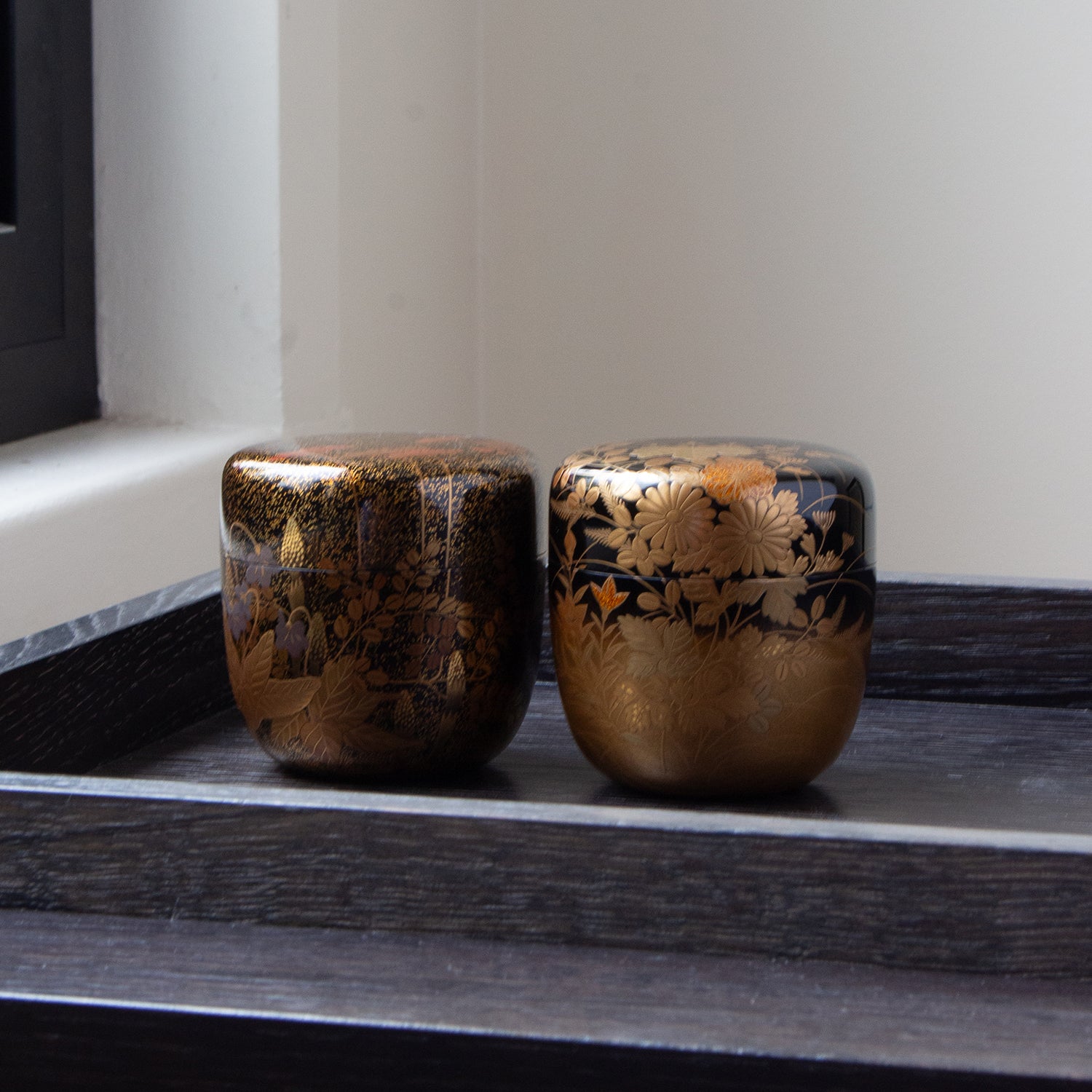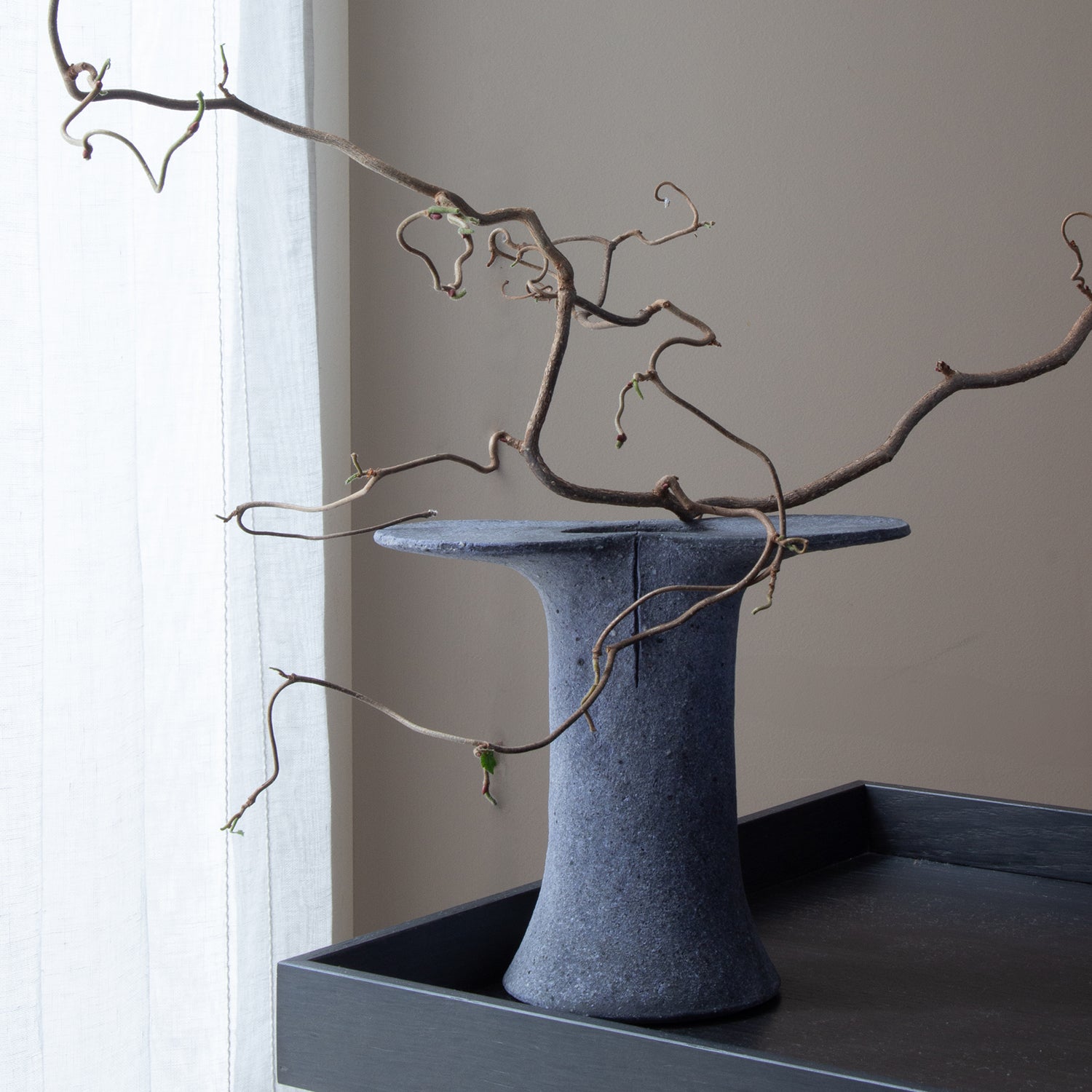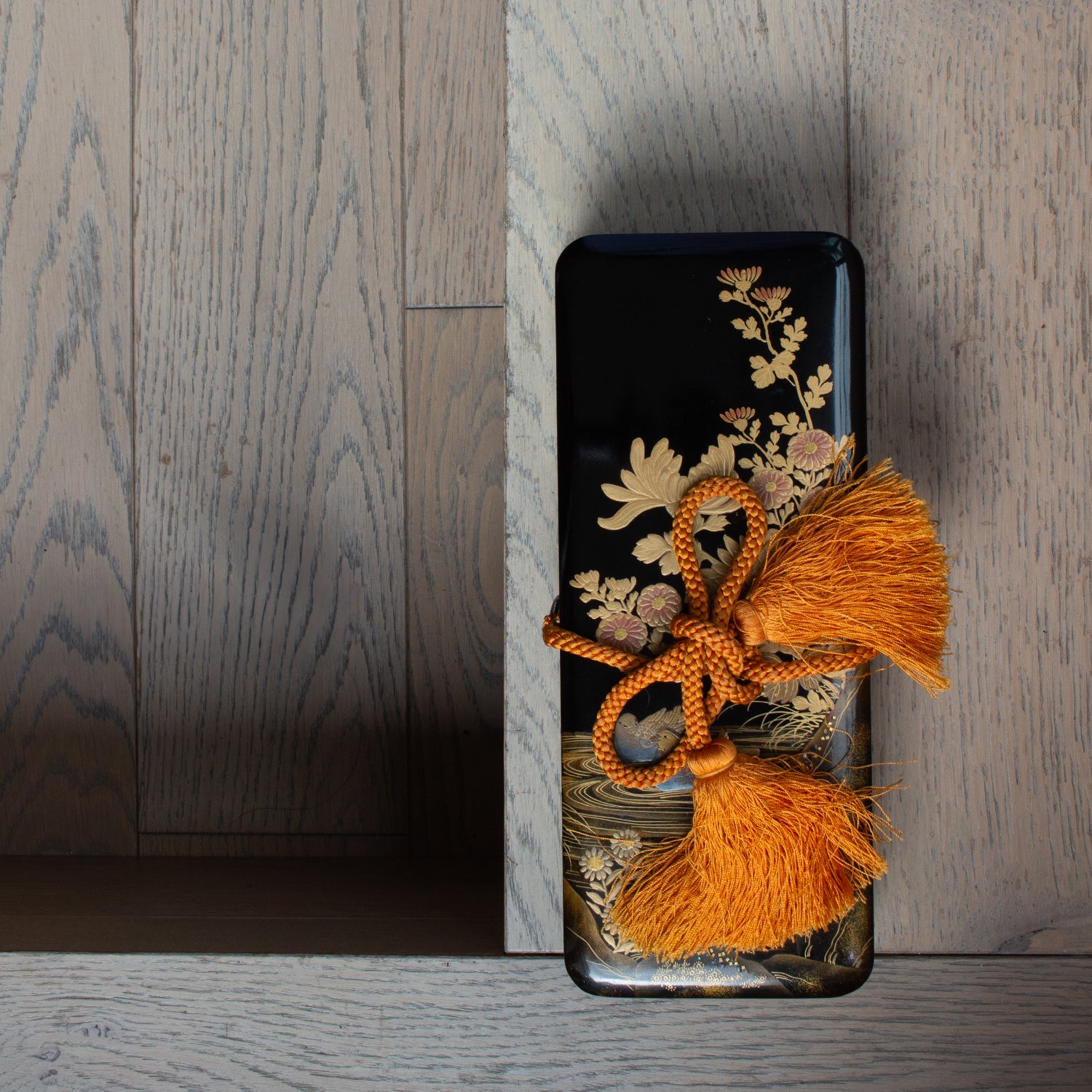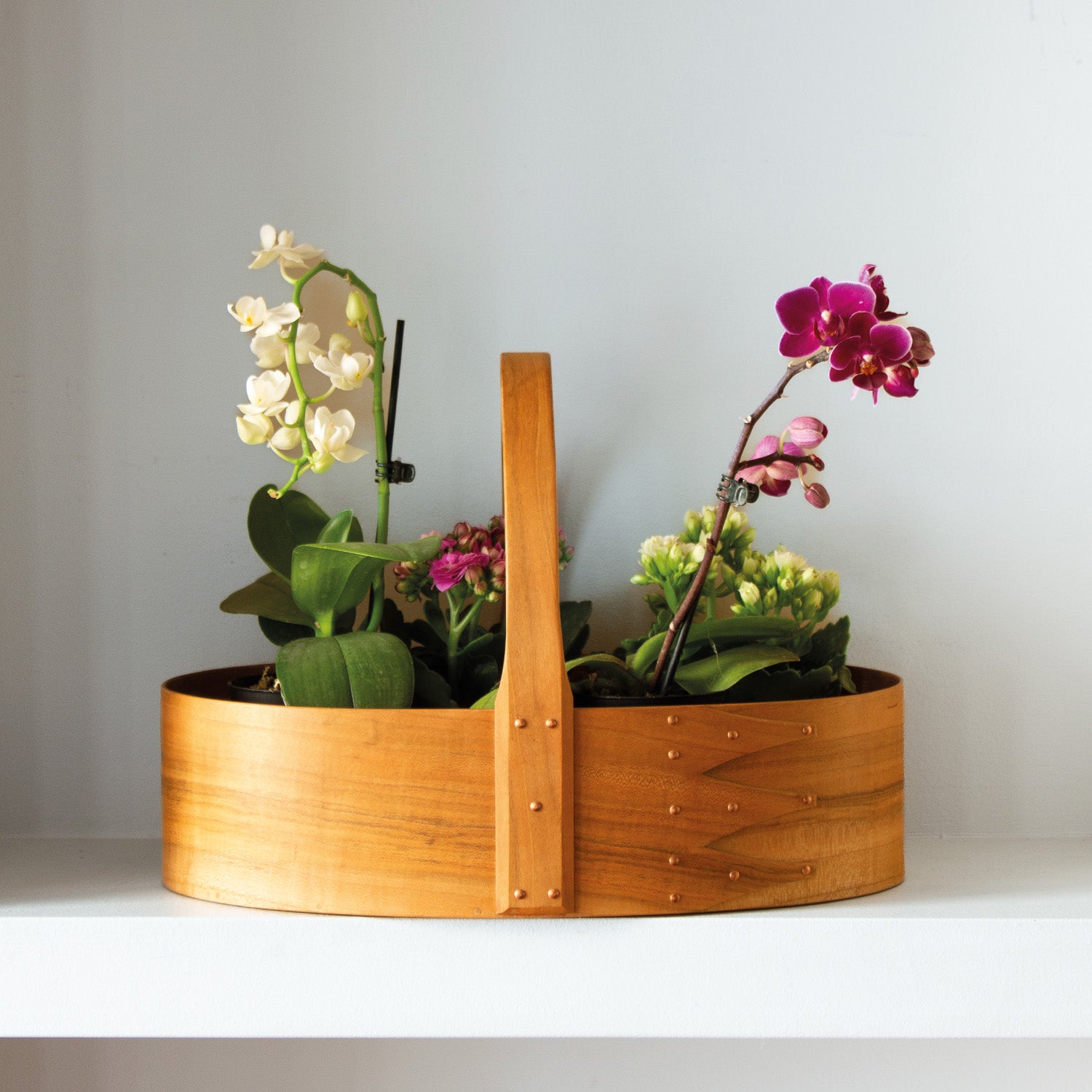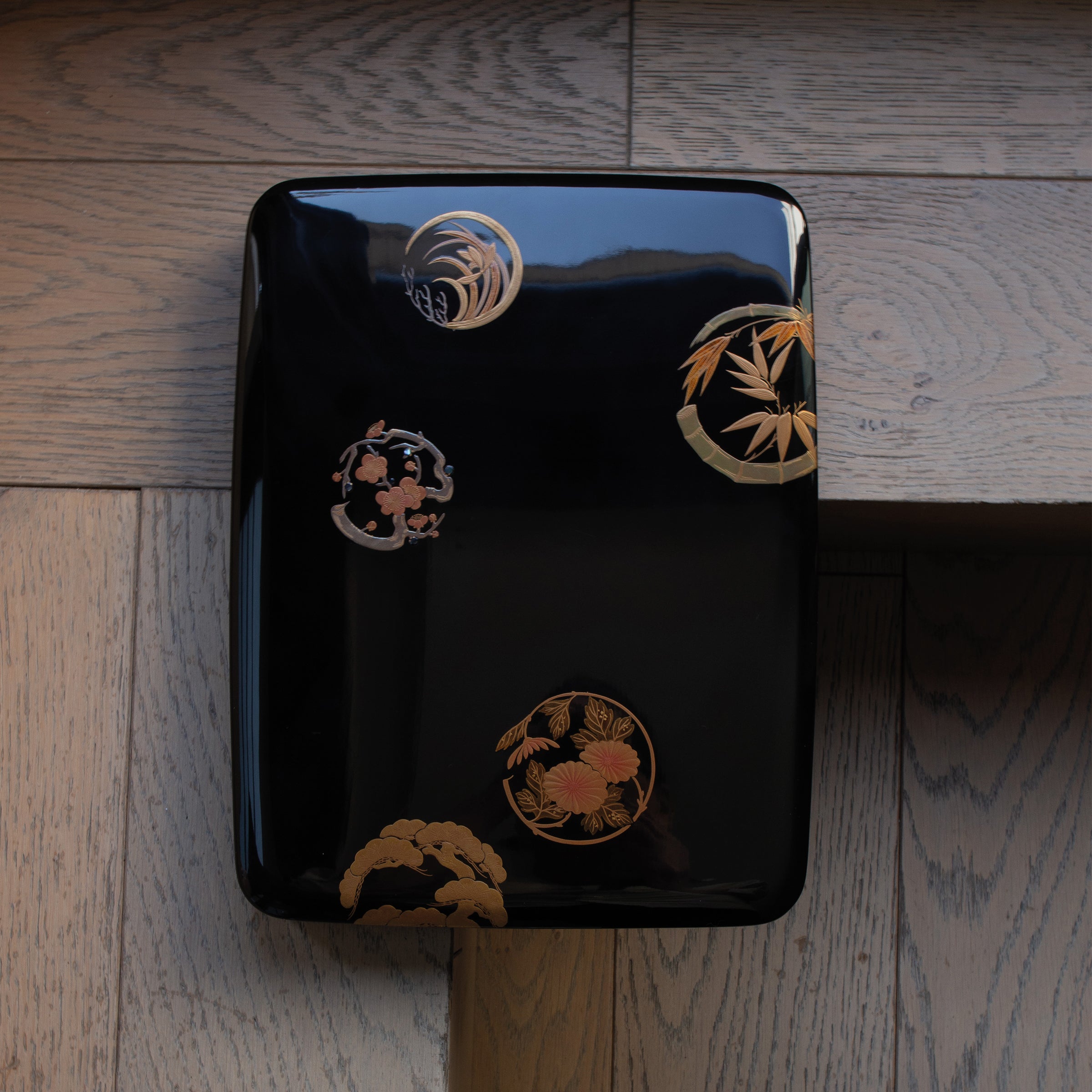
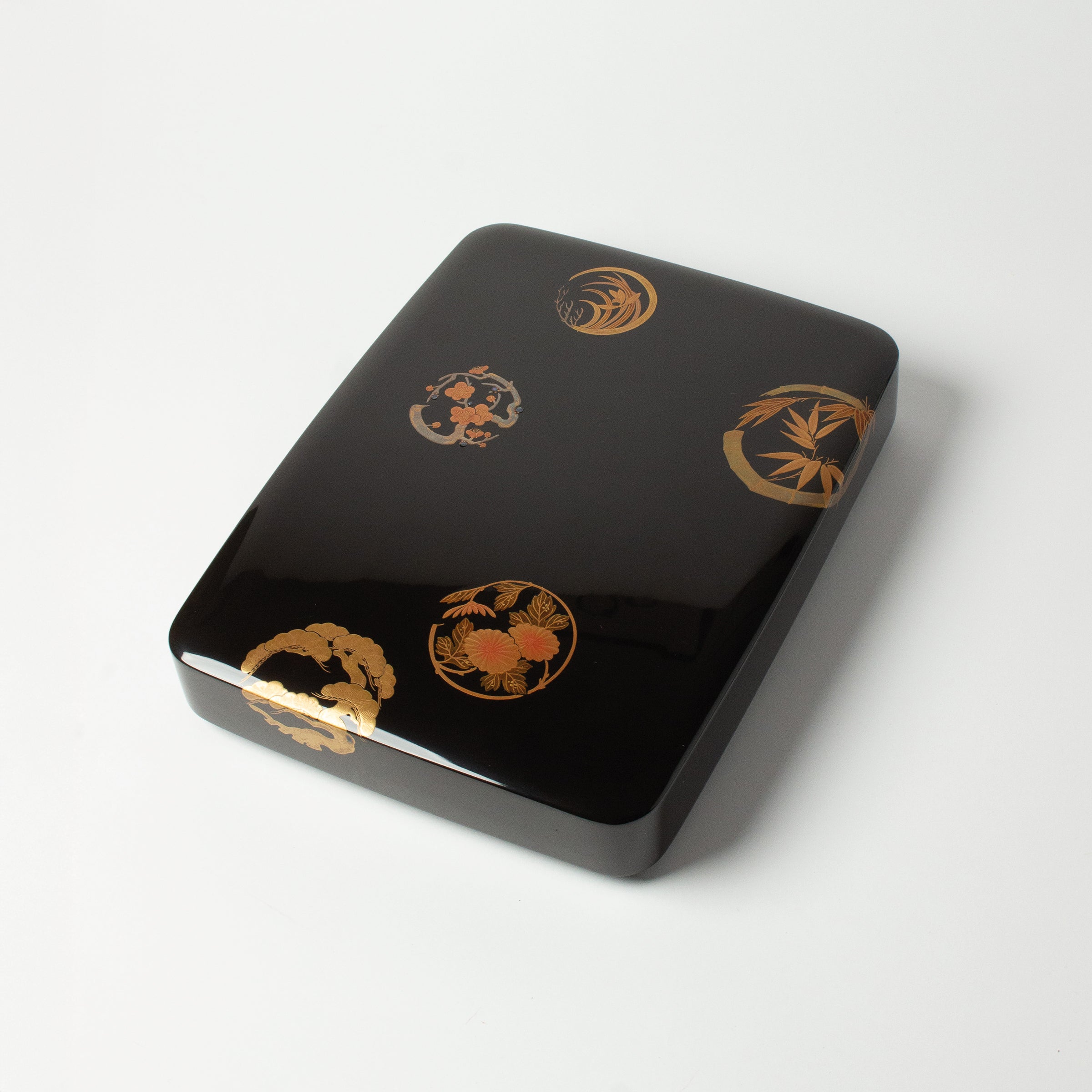
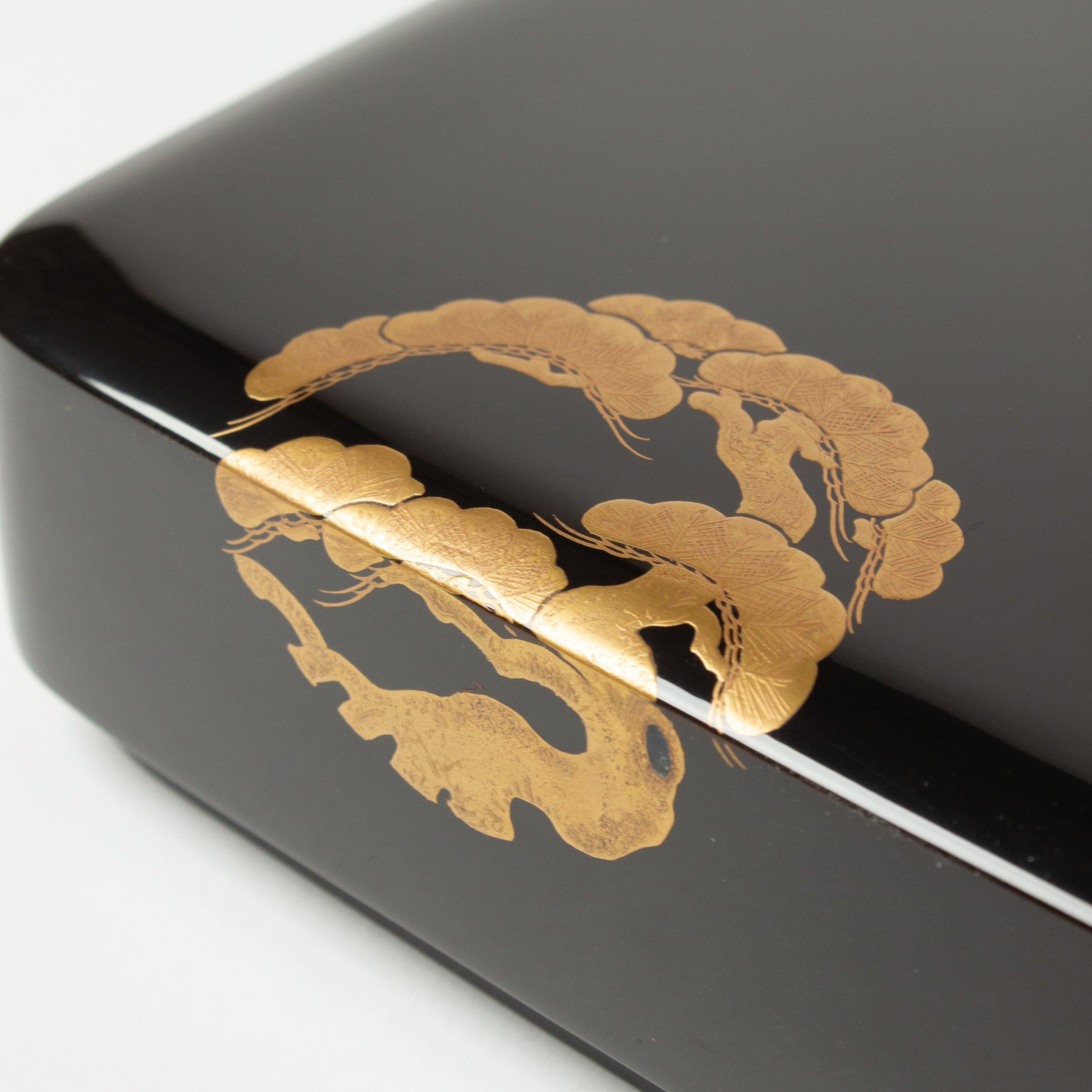
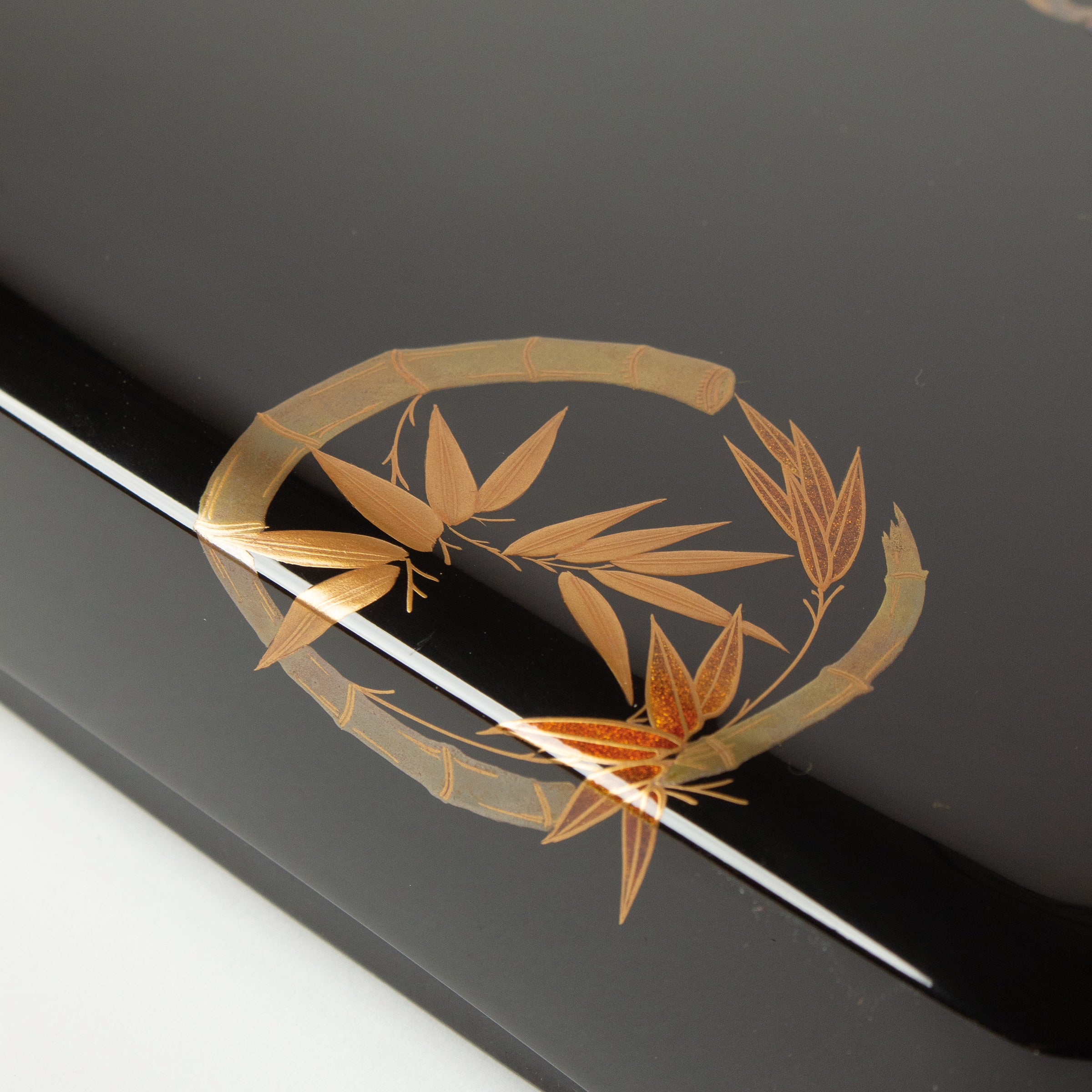
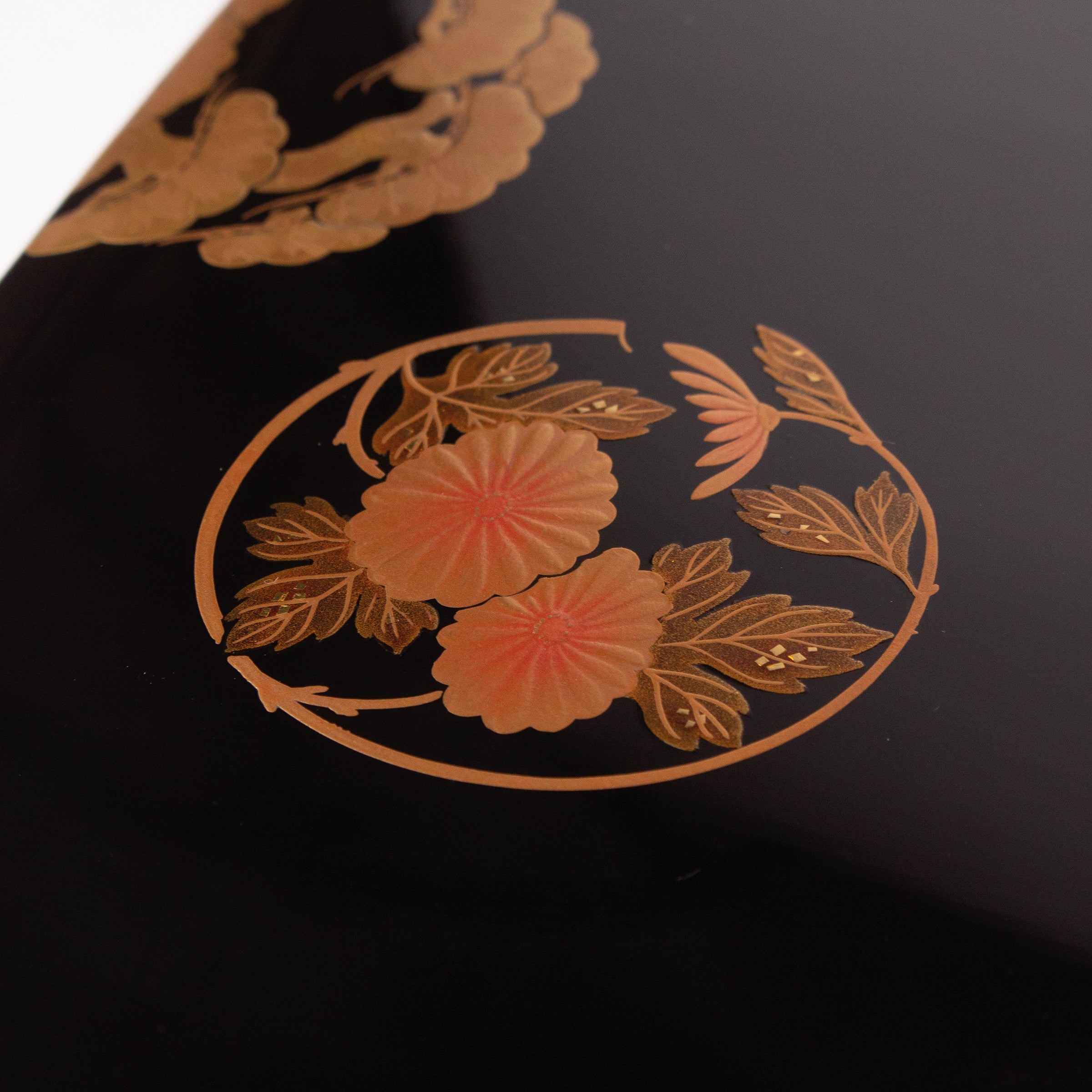
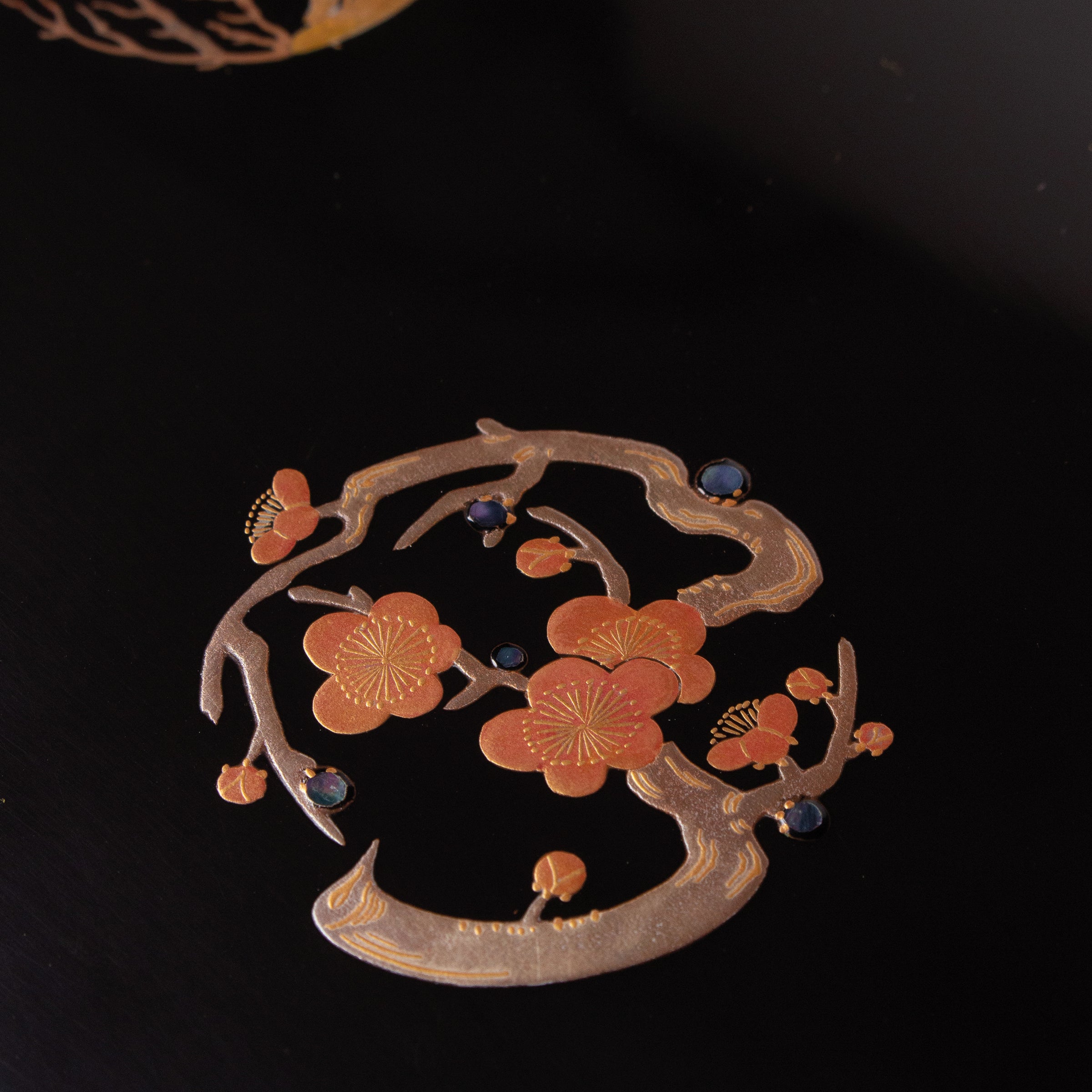
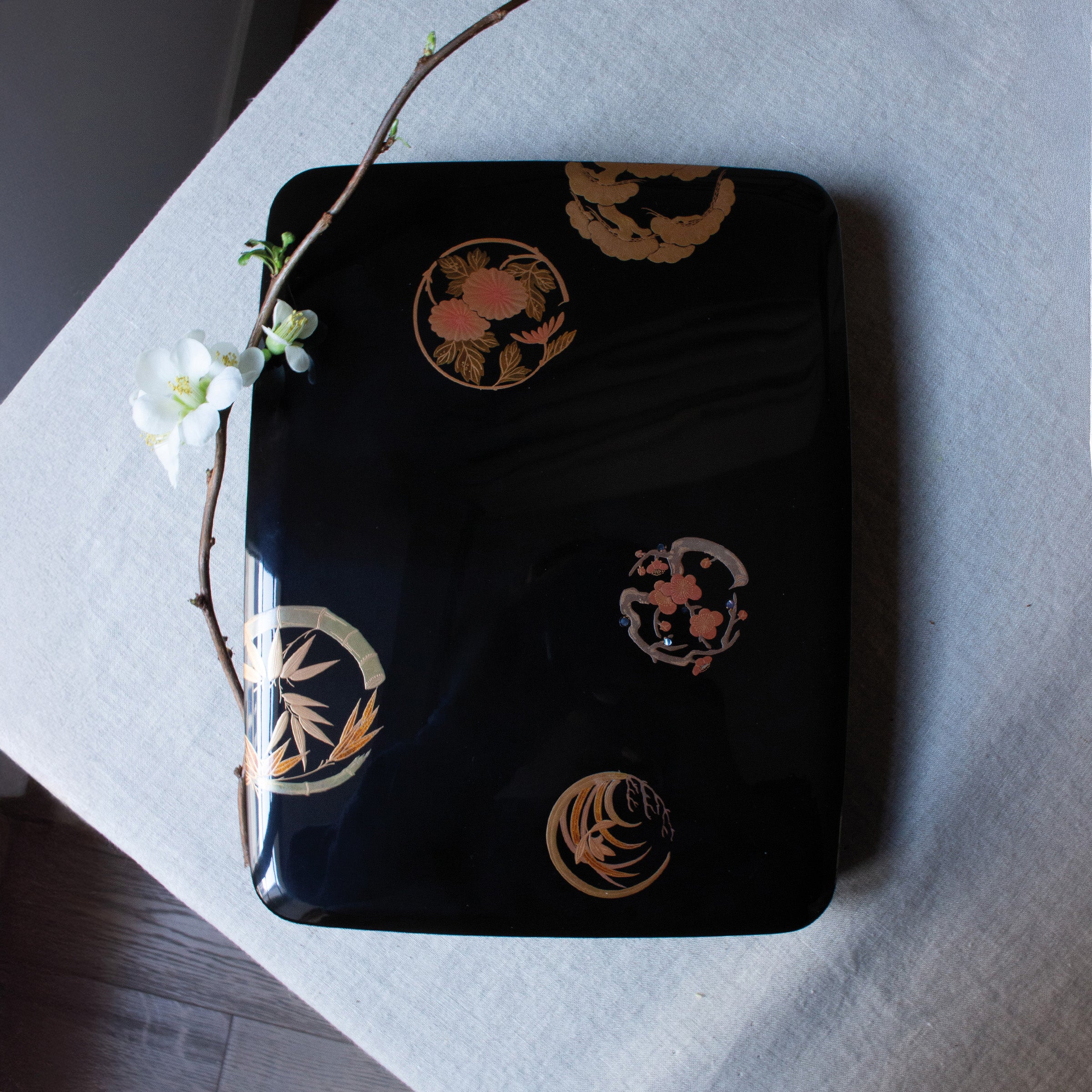

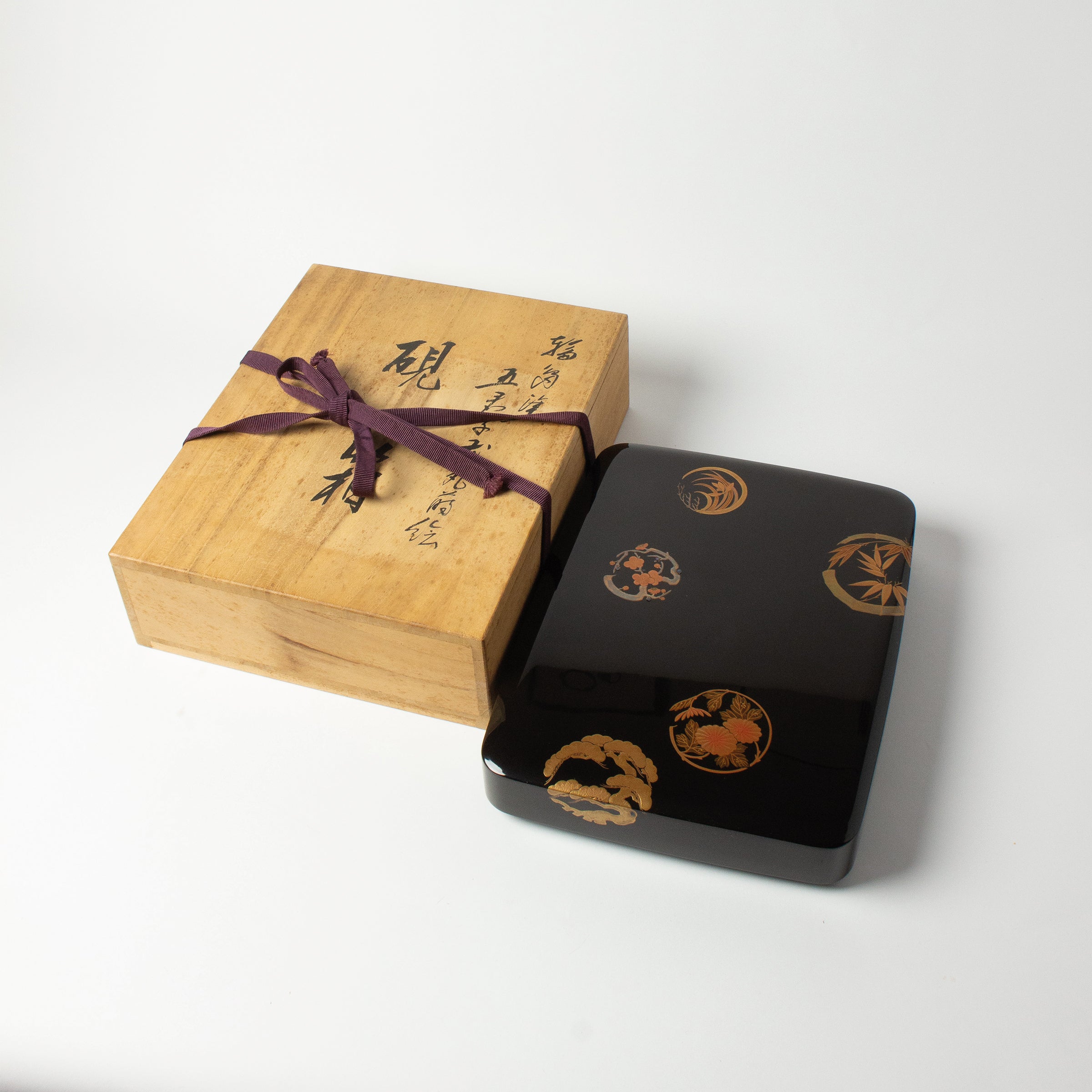
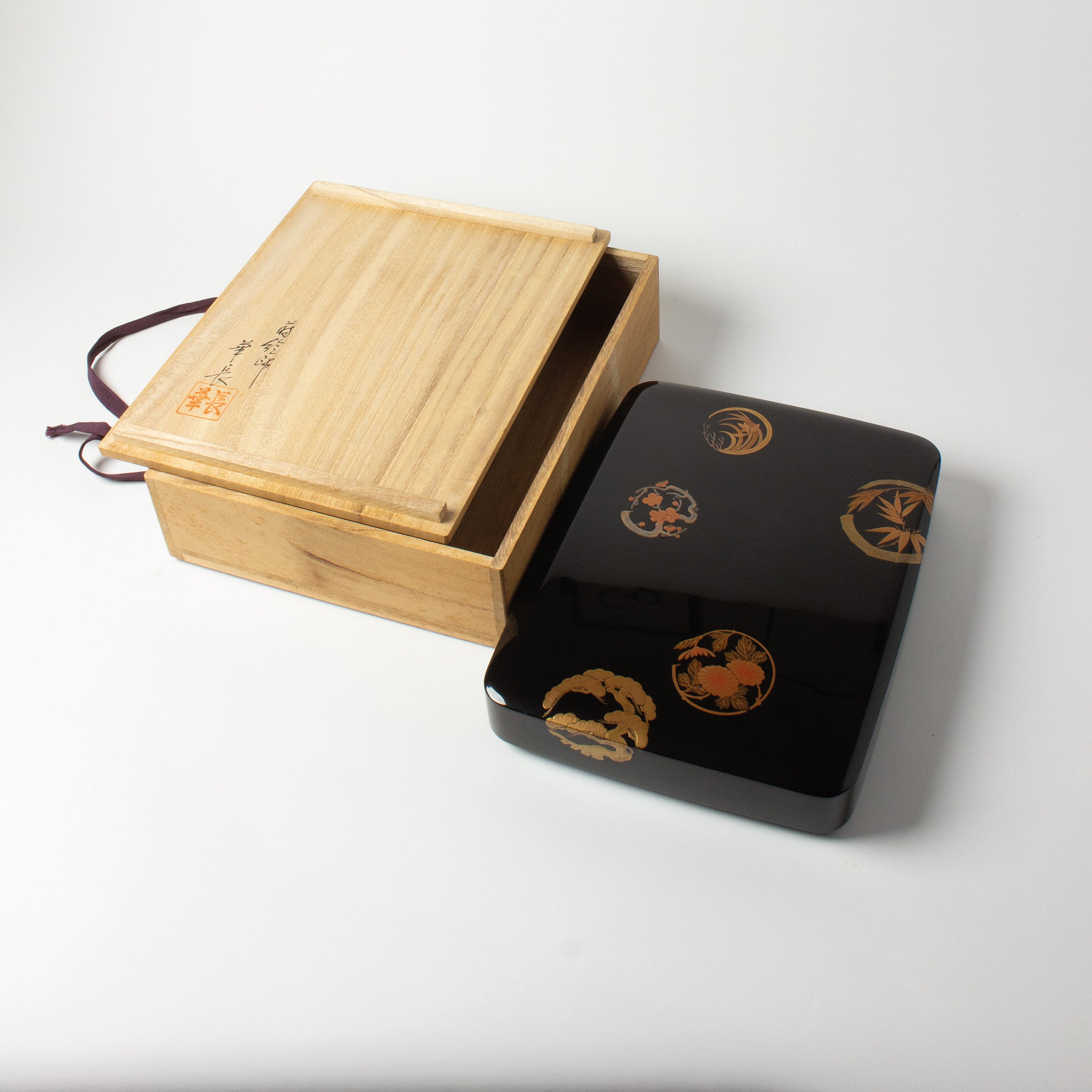
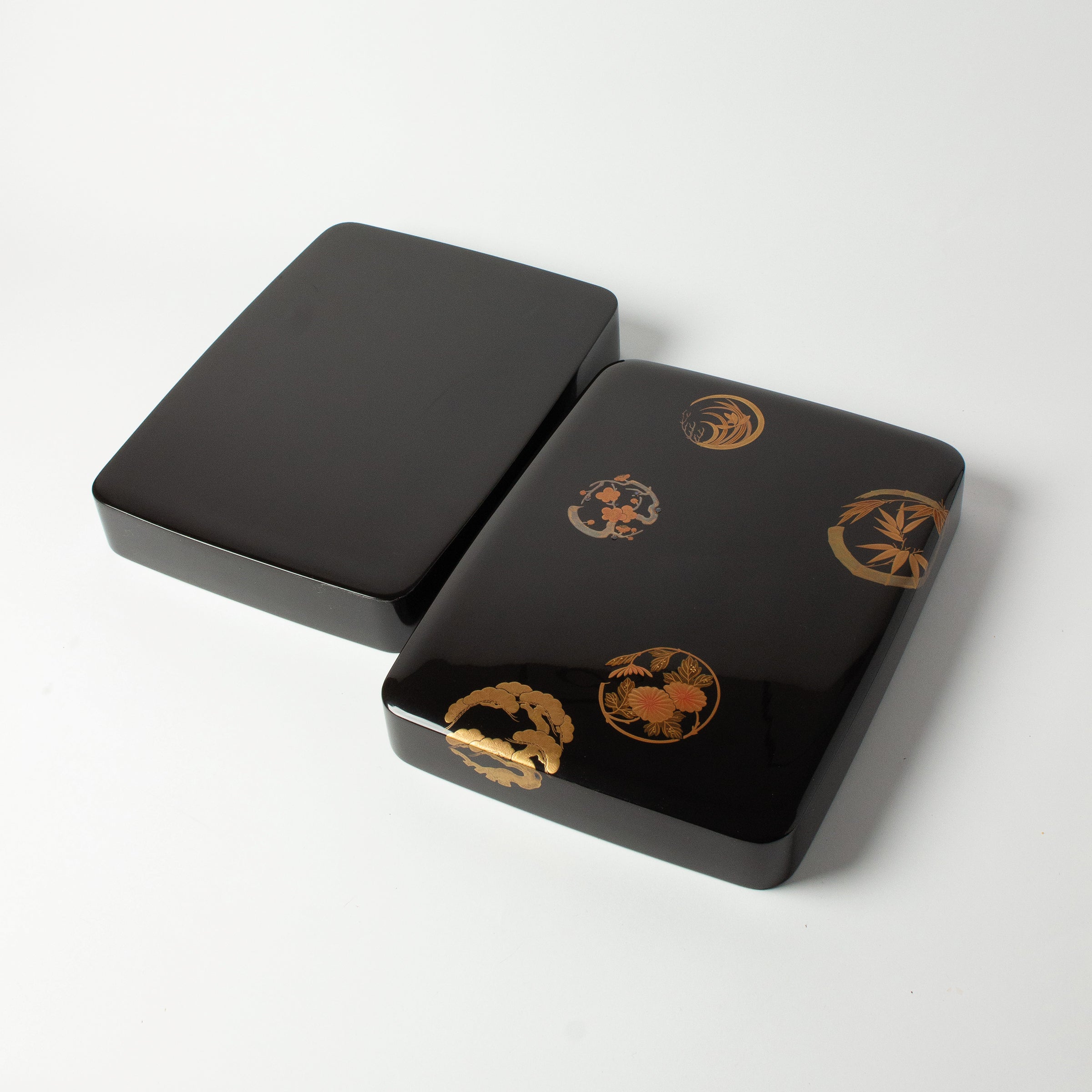
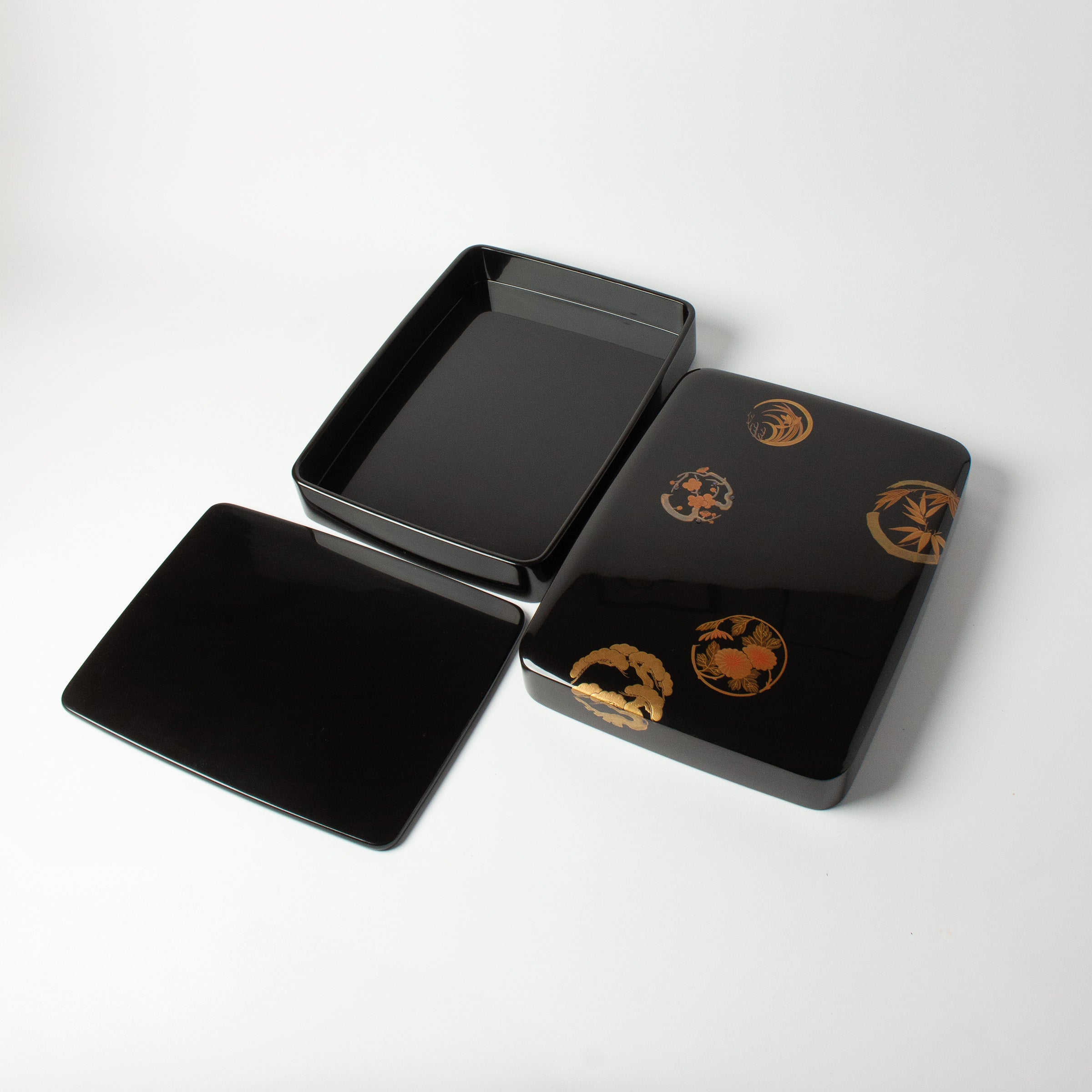
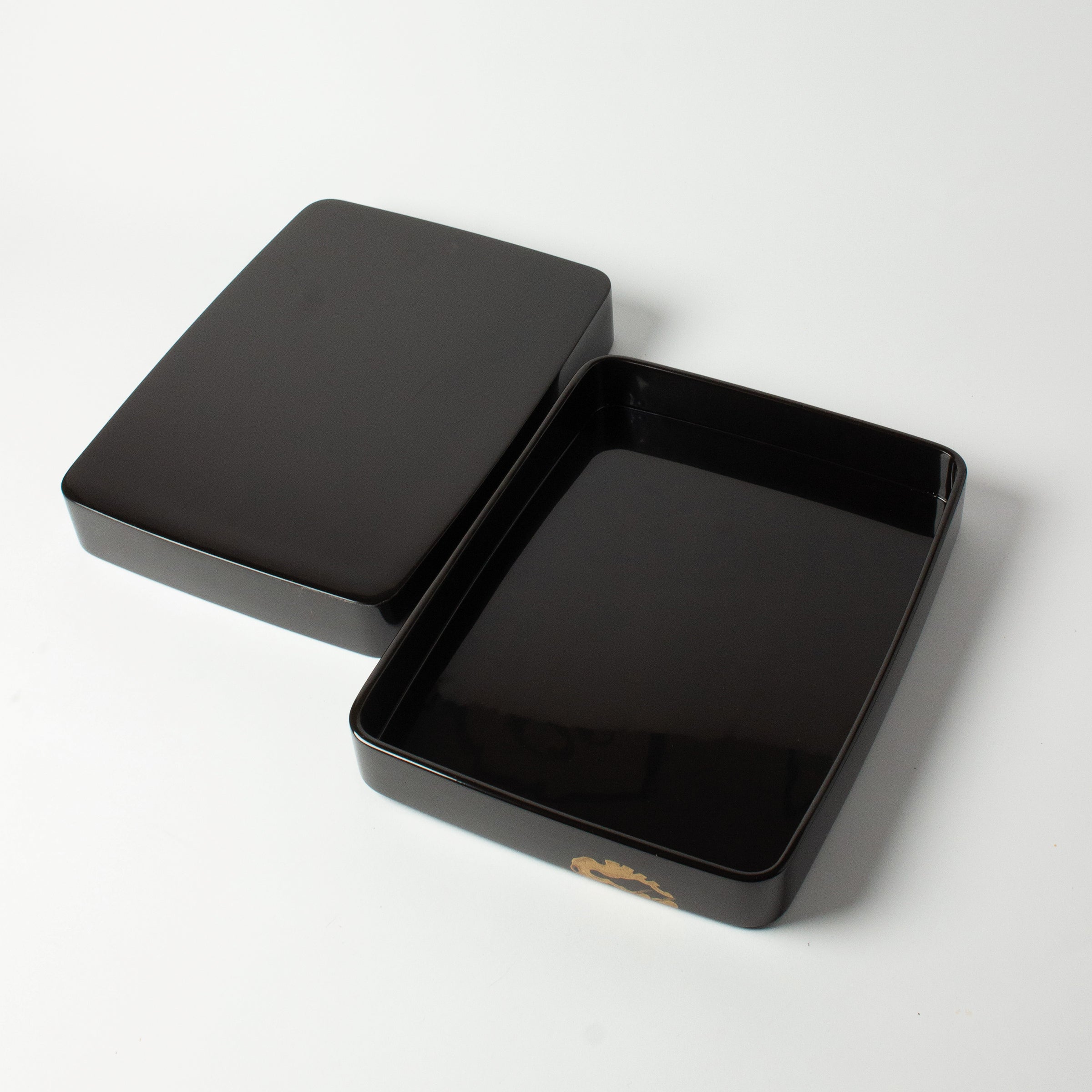
Suzuribako (writing box) in lacquer and gold powder decorated with kamon (emblems)
Rectangular suzuribako writing box of Japanese craftsmanship in wood and very deep and shiny urushi lacquer from Wajima on which a superb kamon decoration has been applied ( Japanese heraldic emblems used to identify noble families, samurai clans or adorn precious objects, usually represented in a circle).
Represented: bamboo (take, symbol of resilience, prosperity, righteousness); pine (matsu, symbol of longevity, constancy, endurance); plum blossom (ume, symbol of renewal, strength, beauty); chrysanthemum (kiku, symbol of imperiality, purity, longevity) and water iris (kakitsubata, symbol of elegance, poetry, travel)
These fine and detailed patterns were made using the ukibori-maki-e technique (bas-relief carved patterns), the raden technique (mother-of-pearl inlay on some plum blossom buds) and the nashiji technique (gold sprinkling on some bamboo and water iris leaves).
This box consists of 3 parts: the bottom, the lid and a subadai, a similarly lacquered wooden "board" that is usually used to protect calligraphy items during transport. This is a unique copy dating from the Heisei era (1989 - 2019), in very good condition. Note the presence of some micro-scratches on the lacquer, which in no way affect its beauty.
It is accompanied by its protective box made of paulownia wood (tomobako) on which the name and seal of the craftsman are inscribed (inside the lid) and a description is noted on the lid, a protective turmeric fabric (tomonuno) and a braided cord (sanadahimo).
Suzurikabo (硯箱) are ink boxes (bako) (suzuri), traditionally used to gather and store in the same place all the instruments used for calligraphy (except the paper, which is kept in another box, the ryōshibako). They therefore usually contain an ink stone, brushes, an ink stick, a dropper, and a brush rest. Beyond their primary use, they are exceptional and precious decorative objects in which treasures can be slipped.
Wajima lacquerware, or Wajima-nuri, is one of the most renowned in Japan, particularly appreciated for its depth, durability and sophistication. The Noto Peninsula, where Wajima City is located, was hit by a terrible earthquake on January 1, 2024, and many lacquer artisans lost their tools of work. We hope that the invaluable legacy of these skills will continue, even if it will take time to rebuild everything.
|
|
JAPAN |
|
|
(box only) Length 28cm x Width 21.5cm x Height 5cm |
| WEIGHT | (total) 1340gr |
| COMPOSITION |
|
KNOW-HOW
Traditional Japanese lacquer, urushi, comes from the sap of the lacquer tree (Rhus Verniciflua), which flows after incision of the bark. It is a very precious material, a tree will give a maximum of 200ml of sap in its life, which is worked by specialized craftsmen. It takes many operations, slow and meticulous, and several months of work to bring real lacquer objects to life. It is the oldest craft in Japan! Initially used to protect and waterproof objects, this immutable craft has become an art of extreme sophistication. If you want to know more about the art of Japanese lacquer, you can read our dedicated article > .
DELIVERY
Delivery
Free delivery in metropolitan France for purchases over €150. Orders are generally sent within 2 working days, except in special cases announced in the banner at the top of the site.
Precious items are wrapped in beautiful cloth, beautifully tied in the precious art of Korean pojagi. Some exceptions apply, especially if the items are bulky. Learn more >
Detailed information on deliveries is available via this link >
Your invoice will be sent by email
Payment methods
By card (Stripe operator): Visa, MasterCard, Discover, American Express.
Secure card payment with 3D Secure.
By PayPal, Apple Pay, Google Pay and Shop Pay
Returns and exchanges
14 days to change your mind.
CARE INSTRUCTIONS
Clean with a very soft cloth to avoid scratches, soaked in a little warm water if necessary (never soak your lacquer objects). No microwave, dishwasher, dryer. Do not expose to direct sunlight for a long time (risk of discoloration). If the atmosphere is very dry and very hot, and to avoid the risk of cracking, you can place a glass filled with water next to your lacquer object.
Choose options

The art of wrapping
The exceptional items are wrapped in a beautiful fabric beautifully knotted using the little-known art of Korean pojagi and decorated with a delightful maedup (Korean ornamental knot). Details and conditions >


